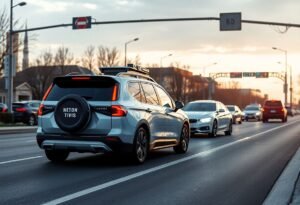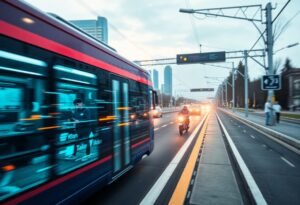The advancement of autonomous vehicles is revolutionizing the modern driver experience. By leveraging innovation in technology, these vehicles promise to enhance convenience, safety, and overall enjoyment on the road. With factors such as traffic management and integrated user interfaces continuously improving, drivers are now experiencing a significant transformation in how they interact with their vehicles.
Enhancing Convenience Through Automation
One of the most significant contributions of autonomous vehicles is the level of convenience they provide. These vehicles are equipped with sophisticated navigation systems and sensors that allow them to independently manage routes, automatically adjust to changing traffic conditions, and even find parking spaces. This autonomy frees drivers from mundane tasks, transforming their time in transit into an opportunity for productivity. Furthermore, features such as voice-activated controls and personalized settings enhance user interaction, making the driving experience less about managing a car and more about enjoying a personal space tailored to individual preferences.
Improving Safety Standards on the Road
Safety continues to be a top concern for car manufacturers and consumers alike. Autonomous vehicles significantly enhance road safety through advanced safety mechanisms that reduce human error, which is a leading cause of accidents. Technologies like accident avoidance systems, emergency braking, and real-time data analytics enable vehicles to react instantaneously to prevent collisions. Additionally, these vehicles are constantly learning from their environment and user behavior, ensuring ongoing improvements in safety protocols. As a result, both users and pedestrians can feel more secure in the presence of these advanced automotive systems.
Redefining User Experience in Travel
The integration of virtual and augmented reality in autonomous vehicles has redefined user experience. Passengers can engage with immersive entertainment during their travel, turning commutes into enjoyable experiences. From virtual tours of the surroundings to online gaming options, the possibilities are endless. This technology allows for a more interactive and personalized experience, shifting the perception of travel from a necessity to a pleasure. As these vehicles continue to evolve, we can expect even more advancements that prioritize entertainment and comfort for all passengers.
Advancements in Connectivity and Smart Features
Another layer of innovation introduced by autonomous vehicles is enhanced connectivity. Vehicles integrate seamlessly with smart home systems and smartphones, allowing for synchronized activities between the user’s daily life and their travel. For instance, a driver can begin their journey from home to work and have their vehicle automatically adjust the thermostat based on their preferences. Smart assistants embedded in vehicles can also manage schedules, provide traffic updates, and assist in navigation—making every journey more efficient and enjoyable.
Impact on Traffic Flow and Urban Planning
The rise of autonomous vehicles stands to significantly impact traffic flow and urban planning. With vehicles communicating with each other and traffic systems, cities may see a substantial decrease in congestion, leading to greener and more efficient urban environments. Innovations like dynamic traffic light control and synchronized vehicle movements reduce delays and enhance the overall commuting experience. Urban planners will need to rethink city designs to accommodate these changes, creating smart cities that prioritize efficiency while supporting advanced transportation systems.
The Future of Autonomous Vehicles and Driver Experience
As we look toward the future, the potential of autonomous vehicles continues to expand. With ongoing advancements in artificial intelligence and machine learning, these vehicles are becoming more intuitive and user-friendly. As public acceptance grows and technologies mature, we can expect them to become a staple of modern transportation. Ultimately, the evolution of autonomous vehicles promises to enhance not only individual driver experiences but also the broader context of travel and mobility.
Disclaimer: This article is for informational purposes only and does not constitute professional advice on autonomous vehicles or technology.





















